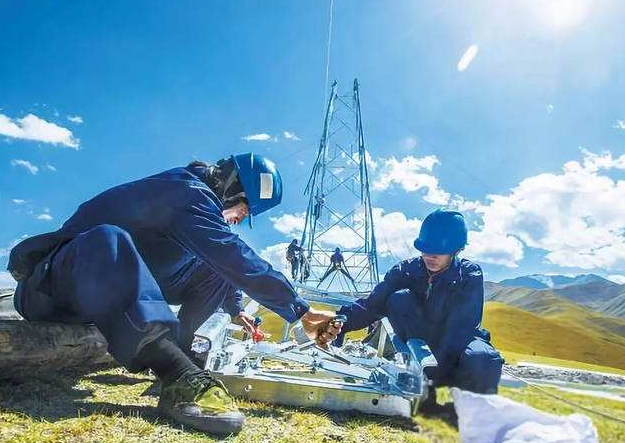Abstract: In order to solve the problem of line selection and location of small current ground faults in the distribution network, this paper analyzes the adaptive filtering properties of the EMD algorithm. The IMF decomposed by EMD of the small current ground fault current displays at different fault angles. Different characteristics, when the low frequency amount is large, the IMF low frequency layer fault point mutation direction is used, and when it is small, the capacitor transient energy is used as the criterion for fault line selection. On top of this, based on the mutual cooperation between DTU and FPI The waveforms of each adjacent FPI were compared to finally determine the fault location, and the relevant logical nodes for the fault line selection and positioning function were expanded in accordance with the IEC 61850 protocol, which provided a reference for the master station to monitor the DTU and FPI functions. The simulation of small current ground fault in distribution network based on MATLAB/Simulink verified the effectiveness of this line selection and positioning method.

The power outage accidents suffered by users are largely caused by distribution network failures. Therefore, truly improving the reliability of residential power consumption is the focus of smart distribution network construction. However, there are many types and quantities of power equipment in the distribution network, including minal Unit (DTU), and there are also distributed devices with a single function but a large number due to economic considerations, such as Fault Passage Indicators (FPI). The distribution network such as Still using the traditional IEC 60870-5 series of protocols will be difficult to adapt to such complex data information.
Therefore, the IEC61850 protocol is currently recognized as the most suitable for distribution network automation, especially its application in line selection and location of small current ground faults in distribution networks. DTU and FPI are currently the main power distribution automation equipment that solves the problem of line selection and location of small current ground faults. Regarding its implementation method, literature [1] proposes that DTU uploads the direction of zero-sequence power for fault location when the zero-sequence current is large, or uses Methods such as wavelet extraction of feature components are used for fault line selection and location [2-3].
However, the structure of the distribution network is complex and changeable, and faults at different times correspond to different fault transient components. Coupled with the uncertain fault oscillation and noise of the system, fixed-frequency filtering algorithms or traditional faults that only rely on fault direction as a criterion Line selection and positioning methods bring huge challenges. Regarding the use of FPI, literature [4] proposes a method that only uses Zig Bee. However, due to the need for cost control, FPI generally does not have communication functions. Even if it has communication functions, it is difficult to independently support IEC 61850 for communication, and faults will be transmitted to the back-end equipment FPI for processing in turn. Literature [5] explains Use this FPI to implement a specific protocol for fault location. How to make FPI support IEC 61850 protocol is also an inevitable problem in realizing distribution network automation.
In accordance with the IEC 61850 standard, the literature [6] created a small current ground fault line selection and positioning logic node suitable for a dedicated method, which provides a reference for the application of IEC 61850 in distribution network fault line selection and positioning. Based on the above points, this article attempts to use Empirical Mode Decomposition (EMD) with adaptive properties to replace the traditional wavelet algorithm used to analyze transient components for fault line selection, and then uses DTU and FPI to detect fault currents. Test and perform fault location. Finally, for this line selection and location method, a fault line selection and location logical node that conforms to the expansion of the IEC61850 protocol is proposed, and the monitoring attributes of FPI are integrated into the node, using DTU as a communication medium to solve the problem of FPI’s impact on IEC Support issues for the 61850 protocol.
1 Introduction to the adaptability of EMD algorithm EMD is a new adaptive signal time-frequency analysis method proposed and developed by NE Huang in the United States in 1998 [7]. Based on the characteristics of the signal itself, it independently extracts the inherent inherent modal function of the signal ( Intrin-sic Mode Function (IMF), a large number of engineering examples have confirmed that the EMD algorithm has characteristics similar to binary filters and is an effective tool for nonlinear fault waveform analysis. The characteristic of the EMD algorithm is local scale adaptation, which is reflected in the detection of instantaneous frequencies.
Perform Hilbert transform on the signal x(t) to obtain ^x(t) that represents the local characteristics of x(t). Define its analytical signal z(t) as: z(t)=x(t) j^x(t)= a(t) ejθ(t)(1)(1)The instantaneous frequency is expressed as: fi(t)=·(2)fi(t)=21π·dθd(tt)(2)12πdt·dt(2)where fi(t) represents the i instantaneous frequency at time t. Different from trigonometric decomposition, the instantaneous frequency obtained by Hilbert transform is a local quantity.
The multi-component signal mathematical model of x(t) is established as follows: x(t)=∑ci(t) r(t)(3)x(t)=i=∑N 1ci(t) r(t)(3) i=1ci(t) r(t)(3) where ci(t) is the single component signal and r(t) is the residual signal. It can be seen that compared with Fourier decomposition that uses triangular basis as the time scale, the time scale in the EMD algorithm represents the implicit local oscillation scale of the signal [8]. EMD decomposition does not require pre-definition of basis functions, nor does it require prior knowledge of the signal, so the algorithm has good adaptability. EMD can be decomposed into several IMFs and a residual signal: s(t)=∑IMFi(t) r(t)(4)s